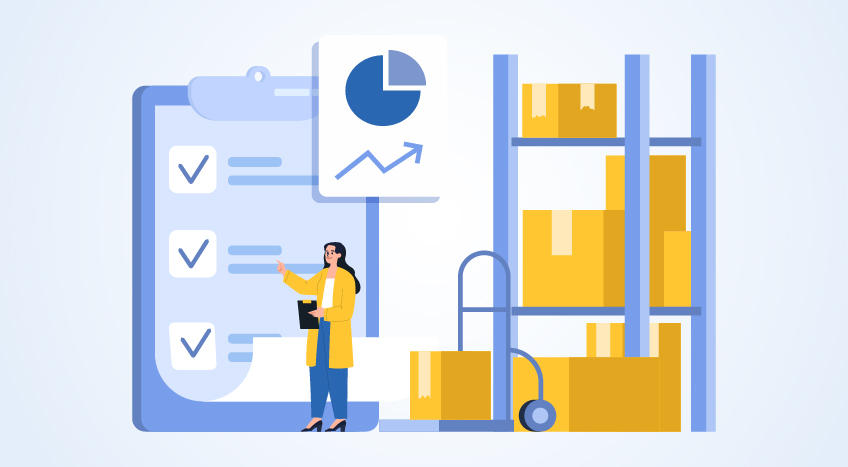A crucial aspect of inventory management that even small firms should be focusing on is the process of forecasting inventory. Planning your inventory correctly will allow you to improve your profits, avoid shortages and stock-outs, handle the surplus inventory, and lower expenses in the long term. What exactly is inventory forecasting about and how can it benefit small companies? Find out in the sections below.
Forecasting inventory
The process of anticipating future demand for stocks based on past patterns of demand as well as current trends is known as inventory forecasting. By using this method, you can accurately estimate the amount of stocks you will require for a specific item in the near future and make your purchases according to that. This way, you will eliminate under-stocking or problems with over-stocking. Your customers will get your goods in time, decreasing the possibility of complaints from customers.
If you have an exact estimate of the amount of stock required for various products and products, you can better plan your sales and work on improving your profits. As a small-scale business owner, the worst you’d want to do to happen is for a customer to be unable to complete their purchase due to the lack of products, or have difficulties within the supply chain. Forecasting your inventory can help you eliminate bottlenecks, and organize to manage your inventory more efficient manner than it was prior to.
What factors influence inventory forecasting?
What are the elements and information needed for inventory forecasting to give you an exact estimate of your needs for stock? Although many of them are in the right category but here are the most significant elements that are worth mentioning:
- Current inventory levels of small-sized firms
- Current Purchase Orders are awaiting payment from customers
- Recent trends have indicated the demands and preferences of customers certain goods
- The past trends and the volume of sales
- Customer feedback on specific products
- Stock levels at which small businesses can manage
Based on these elements In order to forecast inventory, the process uses analysis of data makes inferences, and calculates the expected demand of stocks.
Demand planning and inventory forecasting Do they have the same meaning?
In many circles of business (whether large or small) the terms demand planning and inventory forecasting are often used in conjunction. While both are vital tools for a larger department (inventory management) but they are not the identical. Both ideas must be utilized by small-sized businesses to achieve the desired outcomes like greater profitability, less loss of sales and better management of costs for inventory and much more.
Demand planning is more than forecasting future demands of small-scale businesses while inventory forecasting is about forecasting the inventory required to meet these demands consistently.
Four common methods for forecasting inventory to aid small-sized businesses.
As a small-business owner, you may utilize these popular inventory forecasting techniques to get precise estimates of your future requirements and also plan your inventory more effectively than you did prior to.
Trend forecasting
By using this method it is possible to predict the potential sales growth of specific products and prepare your stock according to. This will allow you to buy more of the products which are popular. Additionally, you can find out more about items that aren’t as popular as the others. This method of forecasting inventory utilizes downward and upward trends in sales data from the past of items and provides complete reports on the potential for coming demand.
Graphical forecasting
This method of forecasting inventory is merely an expanded visually appealing and attractive representation of the information presented in the methods above. These graphic illustrations permit small-sized businesses to examine the past trends in sales in a great deal of detail and draw patterns from the data.
Forecasting qualitatively
If you’re just beginning your own company, you might not have any previous information to base your forecasts of inventory on. In this situation you can employ the method of forecasting inventory qualitatively. The forecasts are by analyzing current trends in the market and economic conditions, the customer preferences reviewers, along with market analysis. It is possible to plan your inventory for the future based on the results of these studies and reviews because they are the most appropriate strategies available to new businesses or those planning to introduce new products to the marketplace.
Quantitative forecasting
This kind of inventory forecasting is the most accurate methods since it is based entirely on numbers. It does not consider patterns, trends, or individual preferences will be analyzed in this method. The sales figures you have for the last year or quarter (whichever time period you have) are examined in depth to determine the demand expected for your inventory. Since it relies on the past sales data and forecasting quantitatively is close to being perfect, when forecasting demand for specific items.




